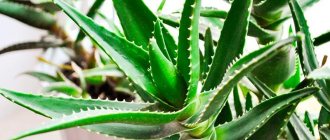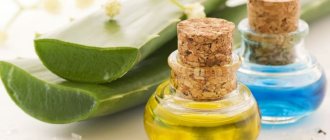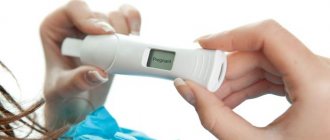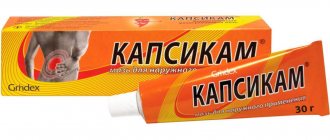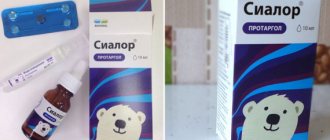Aloe medicinal preparation in ampoules, the instructions for use of which provide information on the composition, pharmacological action, indications for use, side effects, contraindications, dosage and methods of use, is popular among the population.
Pharmacies offer the following agave preparations:
- drops to protect the organs of vision from fatigue;
- solution for subcutaneous administration, sold in sealed ampoules;
- aloe juice in bottles;
- syrups;
- pills.
Aloe is an evergreen plant famous for its beneficial qualities. Its healing properties are actively used by both official and alternative medicine.
Compound
Aloe extract in ampoules includes:
- active substance - extract from dry leaf blades of aloe vera;
- auxiliary elements - water for injection and sodium chloride.
This medication contains substances that play an important role for the human body. These include:
- vegetable acids;
- glycosides;
- vitamins (tocopherol (E), retinol (A), ascorbic acid, etc.);
- macro- and microelements;
- aloin;
- hydroxymethylanthraquinone.
Liquid aloe vera extract in 1 ml ampoules has a number of analogues:
- fresh leaf;
- syrup;
- juice.
Before using any medications, you should read the instructions for use and consult your doctor.
pharmachologic effect
The drug has a wide range of healing properties, which is why it is so valued in medicine. Aloe solution is used as:
- antibacterial agent (suppresses the vital activity of staphylococci, streptococci, typhoid and dysentery bacilli, Proteus);
- anti-inflammatory drug;
- a mild laxative, since aloe extract has a stimulating effect on the intestinal mucosa, enhancing its peristalsis;
- a medicine that stimulates appetite and increases the secretion of digestive glands due to enzymes, vitamins and bitter taste;
- a drug that enhances the regeneration of skin and mucous membranes;
- immunomodulator.
Aloe in ampoules enjoys the trust of consumers, as it is of plant origin.
Beneficial features
Aloe has been famous for its healing properties for a very long time. Even the Bible has a mention of it. This plant was used as medicine and for cosmetic purposes by many historical figures. The stem and leaves contain various components that are necessary for humans. These are resinous substances, more than 75 vitamins, enzymes, anthraglycosides, minerals, and beneficial amino acids.
Scientists have proven that aloe helps restore cells in damaged areas of the skin, and also stimulates the formation of new body cells. It tones, softens, refreshes and soothes the skin.
When exposed to air for 3-4 hours, the raw material loses many of its beneficial properties. Therefore, the leaves must be stored in the refrigerator wrapped in cellophane. So they will have healing properties for a long time. The leaves can also be dried and then stored in a dry place, but no more than two years.
Indications for use
It is advisable to use agave extract as a general strengthening drug in the treatment of the initial stages of diseases such as pneumonia, bronchial asthma, and pulmonary tuberculosis.
In ophthalmological practice, the medication is effective for inflammatory eye diseases (keratitis, conjunctivitis, blepharitis), clouding of the eye lens (cataract), optic nerve atrophy, rapidly developing myopia (myopia).
In gastroenterology, agave juice is used as a complex drug for the treatment of cholecystitis, gastritis with low acidity, gastroduodenitis and simultaneous inflammation of the large and small intestines. It is also used as an excellent appetite stimulant.
In gynecology, the drug is used extremely carefully, as it has many contraindications. Aloe injections have proven their effectiveness in solving infertility problems in women and men. It is prescribed after gynecological operations to prevent adhesions. Due to the fact that it stimulates the immune system, it is recommended for chlamydia, mycoplasmosis and other diseases. Injections are often given for erosive lesions of the cervix, for inflammation in the appendages and for obstruction of the fallopian tubes.
In neurology, due to its properties that strengthen the immune system, it is used during the recovery period after a stroke and in the treatment of neuritis and radiculitis.
In dermatology, it is used in the treatment of acne (a disease characterized by chronic inflammation of the sebaceous glands), for various inflammatory skin diseases (dermatitis, hidradenitis) and to accelerate skin regeneration.
Aloe juice in ampoules has confirmed its effectiveness in the treatment of disorders of the cardiovascular, digestive, genitourinary, nervous and immune systems. It is also used in ophthalmology and pulmonology.
What are the benefits of Aloe Vera
The medicinal plant has a pronounced antibacterial, antiseptic, anti-inflammatory, bactericidal, immunomodulatory, antimicrobial and wound-healing effect. Therefore, the natural product is widely used in the treatment of many pathologies of the skin, internal organs and systems.
The general benefits of Aloe Vera for the body are characterized as follows:
- Strengthening immune status.
- Prevention of cancer.
- Restoration of damaged intestinal microflora.
- Prevention of the development of urolithiasis.
- Fighting inflammatory pathologies of the skin.
- Normalization of blood glucose levels.
- Improved appetite and digestive activity.
- Prevention of premature aging.
- Cleansing the body of waste and toxins.
- Regulation of the liver and bile ducts.
- Acceleration of metabolic processes and blood circulation.
- Healing of affected areas of the skin - ulcers, wounds, cuts, burns, purulent and inflammatory elements.
- Stimulation of sexual activity.
Contraindications
There are a number of diseases for which you should not use medication based on agave:
- liver dysfunction;
- acute diseases of the gastrointestinal tract;
- severe diseases of the cardiovascular system;
- diffuse glomerulonephritis;
- Crohn's disease (chronic gastrointestinal disease);
- haemorrhoids;
- diarrhea;
- appendicitis;
- abdominal pain of unknown origin;
- ulcerative colitis (chronic inflammation of the colon mucosa);
- intestinal obstruction;
- increased secretion of the digestive glands;
- cystitis (inflammation of the bladder);
- arterial hypertension.
Injections should not be given to children under 1 year of age, pregnant women or breastfeeding women.
You should not use the solution without the advice of your doctor, especially when treating children.
Numerous studies have not revealed any adverse effects from an overdose of an aqueous solution in ampoules.
The effectiveness of aloe in ampoules has long been proven. This is a proven and popular herbal remedy.
Aloe solution is incompatible with some dosage forms and therefore it is highly not recommended to use this product simultaneously with the following drugs:
- diuretics (compatibility with Lasix, Furosemide, Diacarb, Indapamide, Hypothiazide, etc. has not been proven) glucocorticoids (Prednisolone, Cortisol, Betamethasone, Fludrocortisone, Budesonide, etc.) and licorice preparations (Linkas, Glyciram, Flacarbine), so How does a decrease in potassium content in the body occur?
- means that increase bleeding, iron preparations due to their increased effect.
With prolonged use of the medication, potassium may be washed out and the effect of antiarrhythmic drugs and cardiac glycosides may be enhanced.
You should not mix aqueous extract of agave with other liquid medicines in the same syringe.
Advantages of liquid extract in ampoules compared to other forms of release
Aloe contains many natural vitamins, mineral salts, essential oils and organic acids. A product based on juice from plant leaves, released in ampoules, is better than other dosage forms:
- The properties are retained for a long time if stored correctly;
- In this form, all the properties of “live” juice are not lost;
- Simple and easy to use;
- Can be used for injection and for external use.
Doctors from different fields of medicine appreciated the effectiveness of the drug, which indicates increased interest in the drug. It is actively used by pulmonologists, urologists, and neurologists. Ampoules are popular among cosmetologists. In this form, it is more convenient for them to use the product to get rid of skin imperfections.
For therapeutic purposes, a natural remedy in this form is used to treat disorders of the digestive system and gall bladder. It is indispensable during rehabilitation after surgery. It is widely used for the regeneration of skin after burns and serious wounds.
In the pharmaceutical industry, larger quantities of the drug are produced in the form of ampoules than in other forms. You can release a product with a slight odor. The drug is a sterile liquid of brownish-red or light yellow color. An aqueous extract is made from fresh aloe leaves. There is nothing to worry about, if turbidity appears in the ampoule, it is still usable.
Side effects
The high content of bioactive substances in the aqueous solution of aloe in ampoules sometimes provokes side effects from taking the medicine:
- various allergic manifestations;
- increased blood pressure;
- a rise in body temperature above normal;
- diarrhea;
- sore throat;
- rush of blood to the pelvic organs;
- feeling dizzy;
- menstrual bleeding increases;
- with subcutaneous administration, pain at the injection site is possible (to eliminate pain, first inject 0.5 ml of a 2% novocaine solution).
If at least one symptom appears, you should stop taking the medication and consult your doctor.
For what diseases is it used in folk medicine?
The pulp of the leaves is a natural antibacterial and antiseptic.
Used for:
- cuts, fresh wounds, abrasions, heals bruises; for the treatment of eczema, scars, acne and other skin diseases;
- sunburn – accelerates healing, soothes pain, cools;
- stomatitis and gum inflammation;
- skin diseases – relieves itching, insect bites, psoriasis, eczema;
- eye diseases (conjunctivitis).
Directions for use and doses
An aqueous solution of aloe for injection is administered subcutaneously. Administration of the drug intravenously or intramuscularly is strictly prohibited.
To use aloe as injections, you must consult your doctor, carefully read the instructions for use and conduct a test. For the test, a small amount of the drug is taken and injected under the skin of the forearm. If there is no adverse reaction, then proceed to the main therapy. It is recommended that injections be given by medical workers in specialized institutions. Painkillers are often prescribed along with aloe solution, since the injections are painful.
Before the injection, check the ampoule for sediment; if it is detected, the ampoule is shaken vigorously until a homogeneous liquid is formed.
The number of injections depends on the disease. Prescribe from 30 to 50 subcutaneous injections. Injections are given once a day, the dosage depends on how old the patient is:
- children from 3 to 5 years old - 0.2-0.3 ml per day, from 5 - 0.5 ml per day;
- adults - 1 ml per day, up to 4 ml per 24 hours is allowed.
It is allowed to repeat the course of treatment after 2 or 3 months. Many people are concerned about the question of whether it is permissible to drink agave solution produced in ampoule form. You should find out about the advisability of using a drug intended for subcutaneous administration orally (by mouth) from the doctor with whom you are regularly monitored. Based on your medical history, the doctor will tell you whether you can drink aloe in ampoules.
Reviews
Marina:
I used to give injections, but I can’t give injections myself, and it’s expensive to constantly call a nurse. She received gynecological treatment. Used agave to increase the effectiveness of basic therapy. What attracts the product is its complex action. It helps relieve inflammation, strengthens the immune system, removes toxins, and activates metabolic processes at all levels. Improvements do not come immediately, but they are there, with minimal expenses and without side effects.
Andrey
I drank agave tablets when I was very sick. The colds just bothered me. Before I had time to recover from one illness, I immediately got a runny nose, cough and fever again. When I completed the course with the biostimulator, it immediately became easier. More precisely, not immediately, but after a month of treatment for sure. I started getting sick less often. One course did not work, two months later I was treated again, but the result is now stable. I also strengthen myself and eat more healthy foods. Personally, I prefer aloe tablets because the juice is very bitter.


